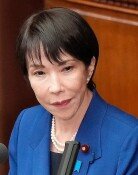Higher Interest Rates in Korea May Cause the Outflow of Capital
Higher Interest Rates in Korea May Cause the Outflow of Capital
Posted May. 25, 2005 03:32,
Amid expectations that Koreas policy interest rates will be higher than those of the U.S., Koreas market interest rates have already outpaced U.S. market interest rates, causing growing concerns over an outflow of funds.
When U.S. interest rates are higher than those of Korea, both foreign and domestic funds are likely to flow out.
According to a May 24 report of the financial sector, interest rates of three-year bonds have been reversed since May 16. On this day, Treasury bond interest rates in Korea registered 3.69 percent, while the same rates in the U.S. posted a rate of 3.70 percent.
Although the reversals occurred on April 7 and May 6, the current trend has lasted a week, generating expectations that this would settle.
The same goes for five-year bonds. With interest rates of 3.81 percent in Korea and 3.85 percent in the U.S. on May 19, those have changed slightly both up and down.
Ten-year bond interest rates in Korea are still higher than those in the U.S., but with a smaller gap.
This is not in line with predictions made by the Bank of Korea.
On May 12, the president of the Bank of Korea, Park Seung, said, Because the Fed keeps increasing the interest rates, it is likely that the U.S. interest rates will be lower that those of Korea, but this does not necessarily mean that market interest rates in the U.S. will be lower than those in Korea.
Cho Young-moo, a senior economist at the LG Economic Research Institute maintained, Since the nature of cash is becoming ever more short-term, higher interest rates in Korea and lower interest rates in the U.S. might have negative ramifications, ranging from the falls in stock prices and currency value to plummeting real estate prices, all stemming from the rapid outflow of investment funds.
Kyung-Joon Chung news91@donga.com





![넘치는 전재수 과거 사진들…유죄의 증거일까, 무죄의 증거일까[청계천 옆 사진관]](https://dimg.donga.com/c/138/175/90/1/wps/NEWS/IMAGE/2025/12/20/132997378.1.jpg)

